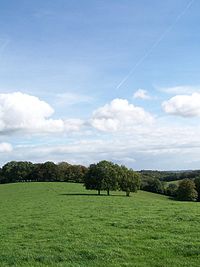
Photo from wikipedia
The restoration of historical cultural landscapes, which has become increasingly widespread in developed countries, has resurrected two common approaches based on a specific set of measures applied for landscape reconstruction… Click to show full abstract
The restoration of historical cultural landscapes, which has become increasingly widespread in developed countries, has resurrected two common approaches based on a specific set of measures applied for landscape reconstruction and preservation (area management plans) and landscape and visual impact assessment (so-called LVIA). The development of area management plans is associated with the evolving concept of a target state, in which the landscape preserves its functionality and possesses the properties of a historical reference model. Such properties are sought using geographic information systems and old map sources, in the course of reconstruction of landscape history. The implementation of LVIA requires prior structural modeling of a visual space in relation to its observers, photographs, and the revealing roles of individual components in forming landscape scenes, as well as determination of visual deformations that negatively affect the aesthetic properties of the landscape. Adverse aesthetic changes may occur as a result of both new actions in development of the area and the natural dynamics of the landscape and its “wilding” (ecorehabilitation). The design of a three-dimensional cultural landscape computer model, supplemented by step by step parameterization of potential changes, makes it possible to objectify the entire process of evaluating acceptable impact on the aesthetic properties of a landscape and to apply this model for solving conflict issues associated with the development of areas of outstanding natural beauty and historical significance.
Journal Title: Regional Research of Russia
Year Published: 2017
Link to full text (if available)
Share on Social Media: Sign Up to like & get
recommendations!